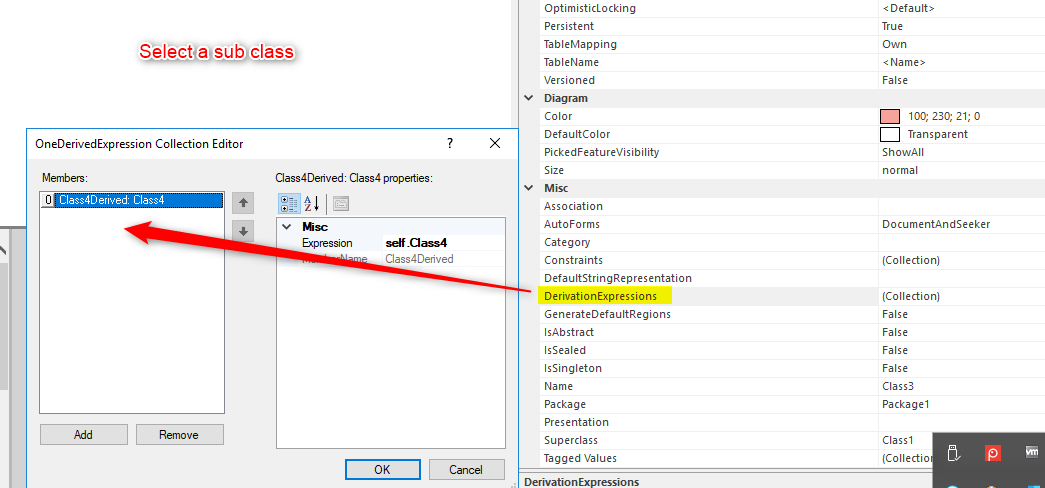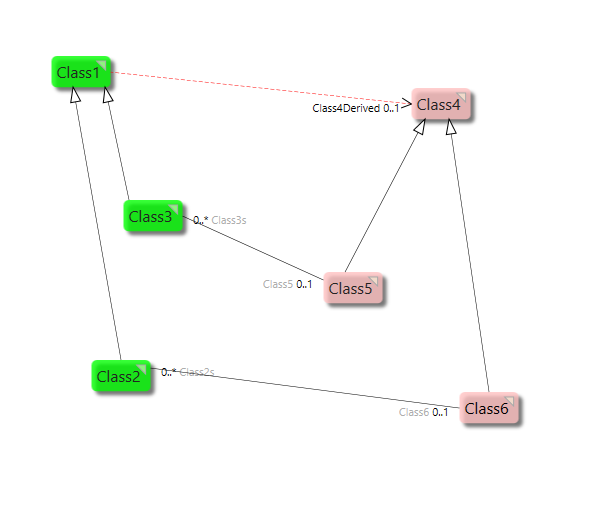Derivation expressions
m ((username removed) (log details removed): Moving to Documentation namespace) |
(Automatically adding template at the end of the page.) |
||
| Line 14: | Line 14: | ||
You have now overridden the dummy default implementation ( Class4.nullvalue) to something valid in the context of the subclass. | You have now overridden the dummy default implementation ( Class4.nullvalue) to something valid in the context of the subclass. | ||
[[Category:MDriven Designer]] | [[Category:MDriven Designer]] | ||
{{Edited|July|12|2024}} | |||
Revision as of 15:33, 10 February 2024
This page was created by Hans.karlsen on 2020-08-25. Last edited by Edgar on 2025-01-20.
You can derive both attributes and association ends.
When it comes to sub-classes that inherit classes that have anything derived, you may want to override the existing derivations.
You can do this in the Derivation Expressions tool:
Consider this model:
The Green-side subclasses 2,3 match the pink-side subclasses 5,6. It would be good to have a derived association that matches 1 and 4 whatever the subclass is.
- Implement the derived link and set the OCL implementation to Class4.nullvalue - it will not be used if your Class1 is abstract.
- On class3, click on DerivationExpressions - find the Class4Derived expression - replace it with ocl: self.Class5 (valid since Class5 is a Class4)
- On class2, click on DerivationExpressions - find the Class4Derived expression - replace it with ocl: self.Class6 (valid since Class5 is a Class4)
You have now overridden the dummy default implementation ( Class4.nullvalue) to something valid in the context of the subclass.


